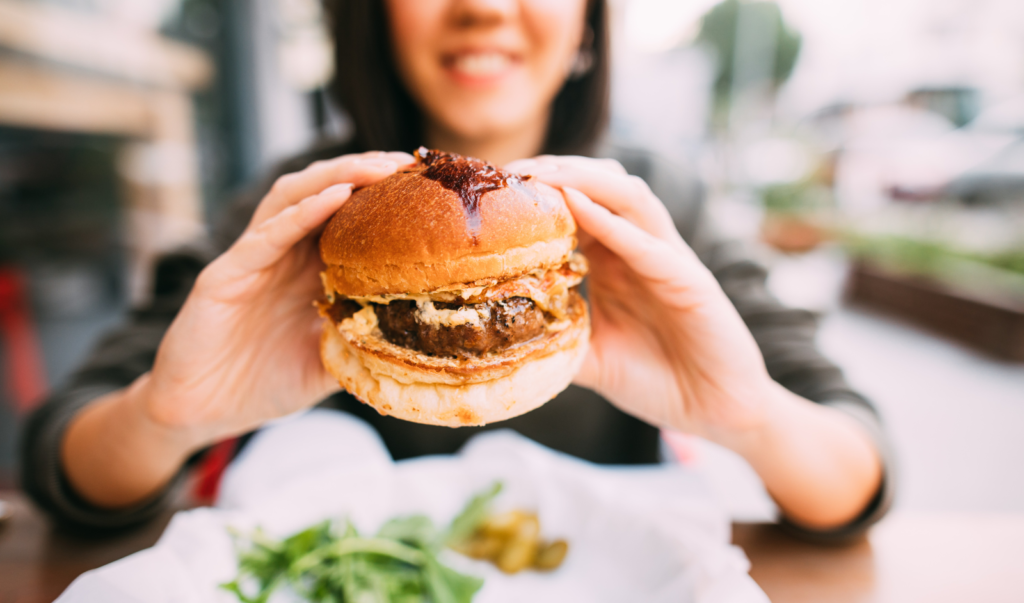Can One Fatty Meal Increase Your Risk of a Heart Attack?
Three and six hours after just one fatty meal, the scientists measured blood flow and assessed how well HDL was protecting arteries from inflammation. What they found is enough to make us put those saturated-fat-rich burgers and shakes down forever.

In one study, scientists at the Heart Research Institute in Sydney, Australia, fed a slice of carrot cake and a milkshake to 14 healthy, normal-weight men and women, ages 18 to 40. The following month, the subjects came back for another cake-and-shake meal.
Both meals were the same in their amounts of calories and total fat but very different in the type of fat they contained. One meal was made with coconut oil, which is 90% saturated fat. The other contained safflower oil, which is predominately polyunsaturated fat.
The immediate effect on the subjects’ arteries was very different, too. Three and six hours after each meal, the scientists measured blood flow and assessed how well HDL was protecting arteries from inflammation. What they found is enough to make us put those saturated fat-rich burgers and shakes down forever.
Good Cholesterol Turns Bad
Compared to the polyunsaturated fat meal, the saturated fat meal essentially turned “good” HDL cholesterol into “bad” HDL cholesterol particles.
Let’s back up a bit and explain HDL’s role. HDL is supposed to be anti-inflammatory, that is, it’s supposed to inhibit the proliferation of molecules that promote inflammation and cause other molecules to stick to the artery wall. These molecules can destabilize atherosclerotic plaques, triggering plaque rupture and heart attacks.
They can also thicken the blood and slow its flow through the arteries, like congealed fat attempting to flow through kitchen pipes.
Sludge
After the coconut oil-rich cake and shake, the scientists noted that the subjects’ HDL particles were accompanied by high levels of these damaging, inflammation-promoting molecules.
Moreover, blood flow in the forearms of the subjects three and six hours after the saturated fat meal had slowed considerably compared to blood flow after the non-saturated fat meal.
What this research shows is that inflammation and damage to arteries happen soon after one fatty meal high in saturated fat. In effect, diets high in saturated fat alter the HDL particles, changing them from so-called ‘good’ cholesterol into ‘bad’ cholesterol. Instead of being anti-inflammatory, they become pro-inflammatory.
A research by cardiologist Stanley Hazen, MD, and colleagues from the Cleveland Clinic have documented this Jekyll and Hyde nature of HDL. Bottom line: There is HDL that is functioning well and doing good things for our arteries, but there is also HDL that is dysfunctional.
Repairing HDL
Researchers at UCLA have reported on the effectiveness of a heart-healthy lifestyle in repairing HDL. The scientists obtained blood samples of men ages 46 to 77 attending a three-week program of healthy eating and exercise at the Pritikin Longevity Center.
On entry, the men tended to have dysfunctional, pro-inflammatory HDL. But blood tests after three weeks at Pritikin showed that HDL had converted from pro-inflammatory to anti-inflammatory, from bad to good.
Enhanced inflammation in the arteries, the result of consuming one fatty meal, may explain why most heart attacks occur at night following the typical U.S. high-fat dinner.

Learn More About Pritikin
One Fatty Meal Produces Cholesterol Remnants
HDL and LDL aren’t the only cholesterols affected by fatty meals. Right after a high-fat meal, whether saturated or unsaturated, there is increased production of particles known as cholesterol-rich remnants. One of these remnants, VLDL, is produced by the liver. Another, chylomicrons, is produced by the small intestine. They’re not LDL cholesterol, but like LDL, they burrow into the artery wall.
Some of these remnants as silent but deadly because by the time we have a fasting blood test, their dirty work is done and they’re gone, and therefore undetected by the standard fasting blood lipid test. How deadly? In a recent study, Dr. Borge Nordestgaard and colleagues at the University of Copenhagen found out. They followed nearly 12,000 people in Denmark who had established coronary heart disease, diagnosed between 1976 and 2010. The scientists found that each 1 mmol (38.7mg/dl) increase in non-fasting remnant cholesterol caused a nearly 3-fold greater risk of a coronary heart disease event. The increased causal risk of heart disease from elevated cholesterol remnant particles appeared much stronger than for changes in either LDL or HDL levels.
The takeaway from this research on cholesterol remnants is that no fat, even those low in saturated fat, should be considered a health food. All fats, including olive oil, are a highly concentrated source of calories. Consuming too much can lead to weight gain, which in turn can lead to a variety of metabolic disorders that promote heart disease, such as increased insulin resistance and higher levels of LDL cholesterol and triglycerides.
One Fatty Meal Produces Clotting Factor VII
After just one fatty meal, there is also an increase in a protein called Clotting Factor VII that causes blood to clot, research has found. Elevated levels of Clotting Factor VII impede blood flow and increase the danger of plaque rupture, which increases the risk of a heart attack.
In China, concerns over rising rates of heart attacks, very likely tied to the country’s rising meat and dairy consumption, have prompted scientists to study Clotting Factor VII. Their findings: Clotting Factor VII is a risk factor for coronary artery disease. Moreover, high levels of triglyceride fats “may indirectly lead to the development of heart disease by increasing the level of Clotting Factor VII.”
Statins Can Only Do So Much
Ultimately, what many of these studies tell us is that taking care of our arteries involves a lot more than just swallowing a statin drug to lower LDL bad cholesterol. Sure, getting LDL levels down to 100 and below is wonderful. But if you’re still eating fatty meals, your arteries are going to suffer.
This is likely part of the reason why most people who take statin drugs to lower their LDL cholesterol levels still have arteries that get progressively more clogged up over time. Statin drugs do little to alter the production of pro-atherosclerotic and pro-inflammatory HDLs and remnant cholesterol. Nor do they lower the pro-clotting effects of Clotting Factor VII, which are elevated after every high-fat meal.
Bottom Line: Fatty Meals and Your Heart
Yes, statin drugs may help speed repairs to damaged arteries, but it is becoming increasingly clear that relying on drugs alone is likely to produce disappointing results. For many people, drugs plus diet are necessary.
What has been scientifically documented to heal arteries and reverse atherosclerosis are lifestyle changes involving regular exercise and a diet like Pritikin that is full of whole plant foods naturally low in fat and naturally nutrient-rich.
Like a good contractor for the remodeling of your house, a healthy lifestyle takes care of all the variables needed to refurbish your arteries. Your arteries get the complete makeover they so desperately need.